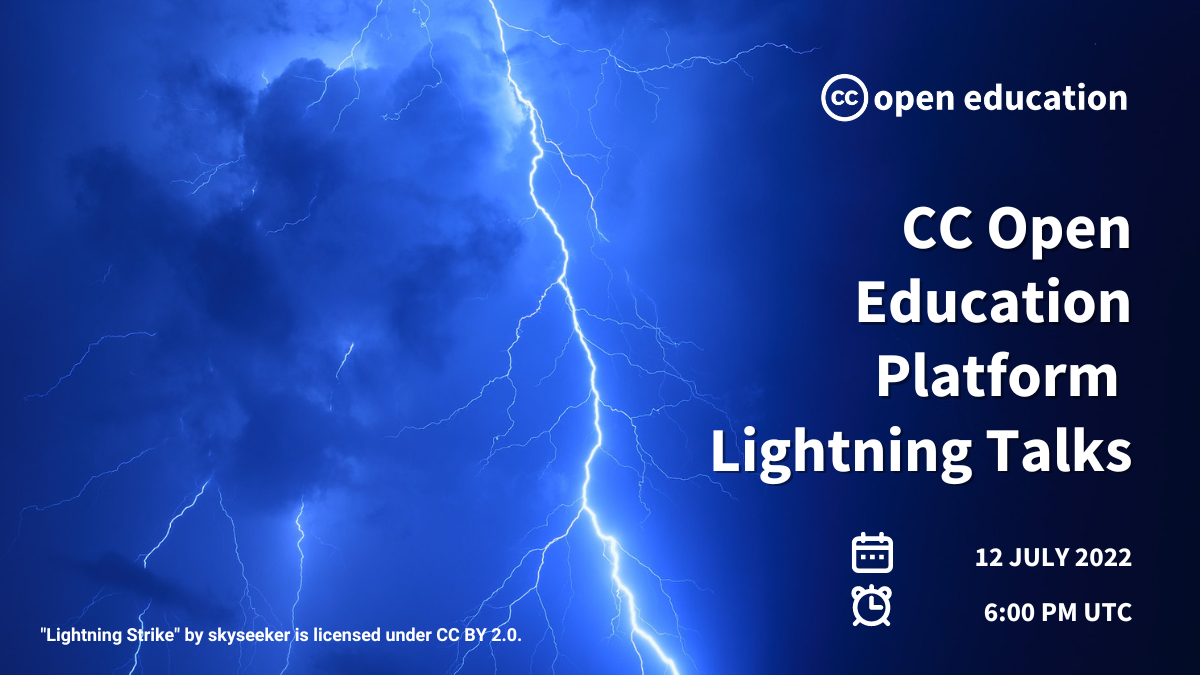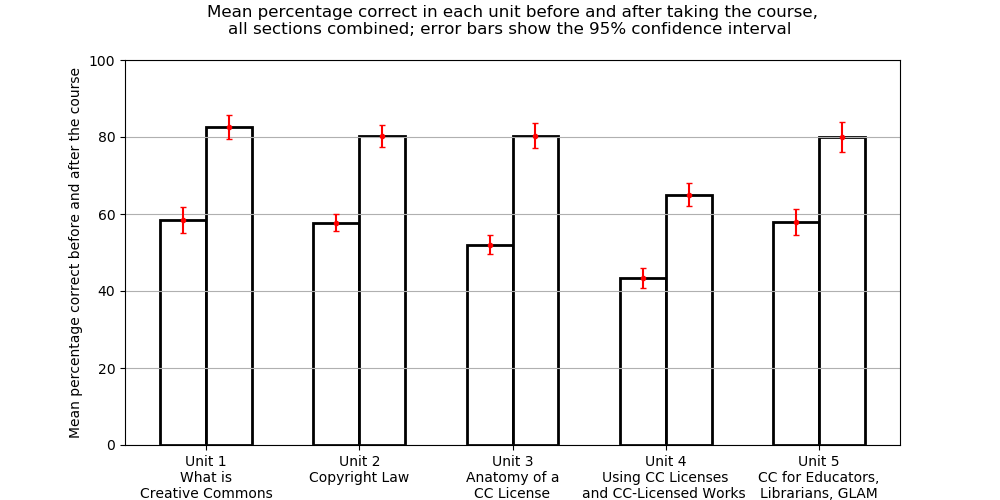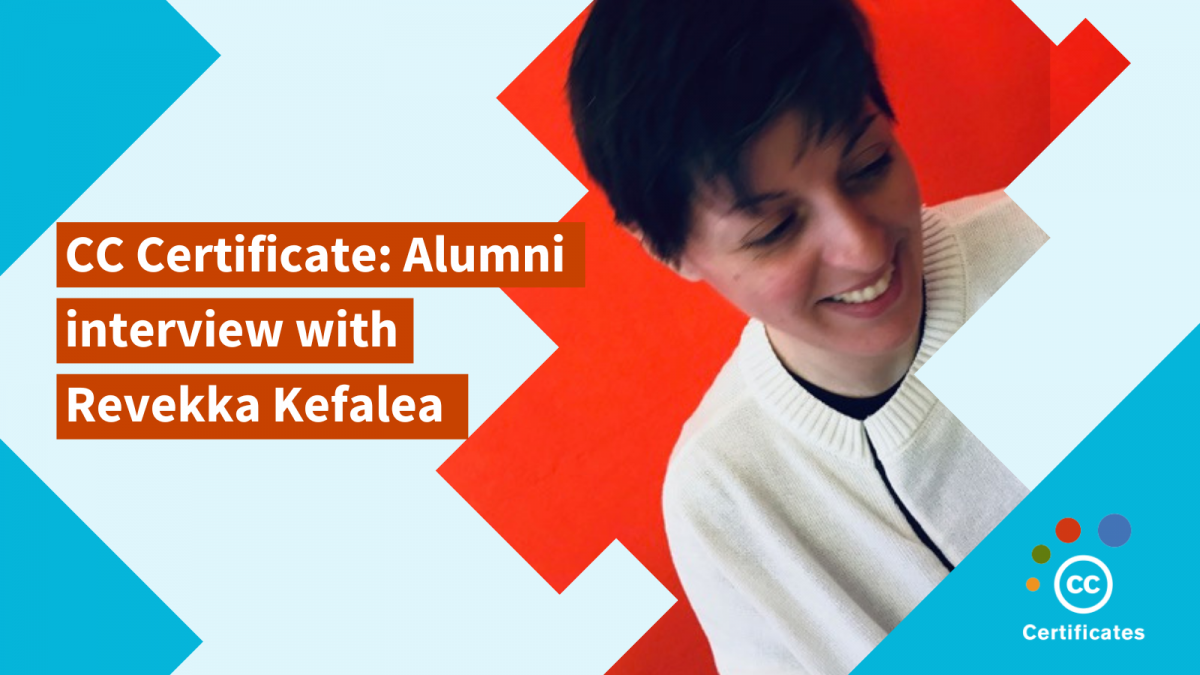A month ago, I blogged aboutCC’s Role in Open Access at Otago Polytechnic; specifically, on their adoption ofCC BY作为默认IP策略。对于那些还不知道的人来说,奥塔哥理工学院去年做出了一个新奇的决定,从本质上扭转了大多数教育机构的标准政策。其他大学的工作人员必须获得许可,在不同于“所有权利保留”版权的许可下发布他们的工作,奥塔哥理工学院的工作人员必须解释为什么他们不希望在CC BY下公开发布材料,如果他们想要标准(限制性)版权或其他许可。这不仅消除了将你的作品公开之前的所有繁文缛节,还使开放获取成为教育的必要条件。(他们所说的开放,实际上是指open–免费复制、分发、改编和衍生作品的商业或非商业目的。”)
Because of this inversion in standard IP policy, ccLearn was curious to learn how and why and what exactly Otago Polytechnic did and thought to arrive at this decision. While most institutions, especially educational ones, slap on the non-commercial term, Otago seemed to think differently about doing so; in fact, they never even considered it.
Read on for an interview with Leigh Blackall, from theEducational Development Center奥塔哥理工。Some things about Leigh: he lives in beautiful Dunedin, New Zealand, develops his own educational resources with his wife Sunshine and dog Mira, and judging from this photo, is a forward thinker who will climb most any mountain.

Photo: Leigh BlackallCC BY
Can you say a few words about yourself and your position in the Educational Development Center atOtago Polytechnic? What specifically led you to the work in Educational Development?
I am officially titled as a Programme Developer which means I help develop new and existing courses here at the Polytechnic. That involves helping teachers to develop new skills or identify new avenues for their services, or to help them make courses more efficient and effective. I found my way into the educational media business because of my interest in media production and design generally. I started creating animations and movies for training in Australia. Later I found myself running a business in producing media for education, but then open source, open content and the free web services – generally referred to as Web2.0, came into my life and things changed. Now here I am in beautiful and progressive New Zealand helping teachers think about ways to integrate some of this into their practices.
In your article, “Educational Development at Otago Polytechnic,” you write that the EDC was established in 2006 “for staff development, online and flexible learning development, and research into educationaldevelopment.” Can you expand on this a bit? What is the EDC’s mission, or overarching goals?
The bottom line of the Programme Development aspect of the EDC is to help faculty to provide educational services to existing students more efficiently and effectively and/or find ways to provide educational services to people we are not currently reaching. (There is a significant economic motivation behind this because the public funding we get is sadly not enough to sustain the whole operation). So this involves a lot of staff training in the effective use of the Internet and things like Open Educational Resources (OER), which in turn means that we have to be up with the play, hence research and development.
At the end of 2006, the fund for the EDC “started to engage in content creation.” Do you mean the creation of Open Educational Resources? Why was it important for Otago Polytechnic to offer free online content?
Initially OER was not the intention behind the fund. We had to change a few things first, starting with our policy on Intellectual Property. But once that was done, it gave a green light for those of us wanting to get into OER. Why did we think OER was important? Well, public education has never had enough money to do what it needs to do. In saying that though, it has at times been very inefficient with what it has tried to do. When the leadership of the Polytechnic made available money for the development of content (amongst other things), we knew it would be a finite amount and not enough to sustain the staff training and content development we were aiming to do.. or to then maintain and update what it was we managed to achieve. So it made sense to first find out what was already out there and available for reuse and adaption (OER) and then to focus our energy on the participation and creation of educational resources that filled the gaps. By making the resources freely available, by using socially networked platforms like Wikieducator, and by trying to establish collaborative networks around our subject areas, we were counting on the strengths of the OER movement to help us sustain our efforts beyond the initial funding. Imagine if we all did that!
与此同时,EDC的工作人员很难找到“可以重用的具有版权的现有内容”。由于奥塔哥理工学院采用了CC BY作为他们的默认许可,我想您所说的可重用内容不仅仅是指共享的能力,还包括构建、混音、改编和再现内容的能力。OP是如何开始关注教育开放水平的必要性的?
Yes, we soon realised that while there is a huge amount of open courseware out there, there wasn’t a lot of open educational resources, or certainly anything that was ever going to easily meet our needs. You see, teaching and learning will always be a context specific pursuit and so we all need the freedom to adapt and reuse content to what ever context we might be working in. So most of the open courseware out there is not open for easy adaptation, and often carries with it a Non Commercial restriction, which could be at some stage counter to what we find ourselves operating in.. who knows? And anyway, it is ambiguous to us what exactly is commercial. So we knew that we didn’t want to use or make derivatives on content that could restrict us or anyone else we might later be associated with. We needed a maximum level of flexibility with our content and CC BY provides that. Over arching all this, and it is in our IP policy as so, we wanted to adopt the practice and principle that information and knowledge should be freely shared.
这种意识是否自然地导致了知识共享许可材料的意识?卡塔尔vs葡萄牙分析奥塔哥理工学院是如何第一次听说知识共享的?卡塔尔vs葡萄牙分析
Well, I think probably since MIT OCW and surrounding free and open source thinking, there have been people in our organisation who have been aware of CC et al for a while now. So it seemed to me that when the opportunity arose to review our IP policy, all the pieces were in place. The key people seemed ready and willing to embrace it. I mean, who in the media and communications game hasn’t heard of Creative Commons by now? If you know someone, send them our way, I’m setting up a new and open course they can enroll in.
How did Otago Polytechnic decide on CC BY for their default Intellectual Property Policy? Can you elaborate on some of the specific steps that led to this choice; for instance, did OP consider other licensing options that were ultimately rejected?
Well, I think I might have already covered some of this. As for other licenses.. no we didn’t look much into the other licenses. The group of people who drafted our policy quickly saw that CC BY was what we wanted, and no one challenged that proposal. So CC BY was the first proposal, and it stayed that way. I mean, we did discuss the other options – well CC BY SA was the only other option for us, but for similar reasons to the NC restriction we decided that CC BY would be the simplest most flexible stance to take.
It probably should be made clear at this point that people in our organisation who own or are responsible for IP have the ability to use licenses other than CC BY—it’s just that they are meant to explain to the managers why they have choose to do so.. As you say, a kind of inversion to what was in place before, where people had to ask permission to be free, now they have to ask permission to be not free.
开放教育资源的法律和技术互操作性如何?您能否谈一谈OP对此的看法,以及它在其知识产权政策中扮演了怎样的角色?为什么OP选择CC BY而不是其他的CC license ?
我觉得这部分最难解释,某种程度上答案就在你的问题中。CC BY是CC上最容易理解的,也最容易遵守的许可(公共领域在美国以外并不被普遍认可)。如果我们添加了其他限制,如NC或SA,那么我们就必须以某种方式监控这些限制,并管理哪些资源是哪些资源。有了CC BY作为我们的默认设置,至少我们知道任何源自我们的内容只需要注明出处,仅此而已;这很容易确定,对于教育从业者来说应该很熟悉。但共享或非商业..这需要讨论,随之而来的是复杂性。
但“抄送BY”只是为了让我们创建的内容易于使用。显然,大多数资源使用CC BY SA或类似的。这就产生了一个小问题,因为这意味着如果我们从这些内容中取样并制作衍生品,那么我们就必须使用相同的许可。这是一个令人沮丧的问题,我试图在每个论坛上提出。但是copyleft运动是强大而不妥协的,到目前为止我还没有成功地说服他们中的任何一个人去抄送。我猜他们仍然担心衍生品会关闭。就我个人而言,在教育领域,我认为这种情况不会持续太久。我想每个人都会看到CC BY的简单和灵活,这本身就超过了所有其他的考虑。
大多数大学只是在“所有权利保留”的版权下在线提供他们的内容,有时可以选择公开许可这些内容。奥塔哥理工学院彻底改变了这种开放的标准概念,默认所有内容CC by与个人限制的选项。将CC by作为默认策略,OP获得了什么?你能详细说明一些具体的好处吗?
What have we gained? Your attention for one! Last time the CC Blog referenced our story, hits to our website and staff blogs went through the roof! Over time, this recognition will continue to grow through the attribution requirement with our content, and maybe that will translate into attracting funding or even students.. but really, as great as the recognition is, it doesn’t immediately change much in terms of the situation in our courses, and this is where we remain focused. We want the skills and capacity of our teaching staff and their students to continue to grow and develop; we want easy and quick access to what ever information resource is needed at the time, and the freedom to reuse it in anyway we see fit; we want to share our experience and expertise with others in similar fields so we can explore collaborative practices and networked teaching and learning; and we want to find ways in which to operate more efficiently and effectively. Our adoption of CC BY is a significant step in that direction as it removes at least one of the artificial barriers to any of that possibly happening.
有什么挑战吗?它们是什么? OP建议如何克服它们?
At the moment, one of the biggest challenges we face is the reliance that some faculty have with all rights reserved content. This content is preventing us from developing OER practices. In some subject areas OER does not yet compete with the quality of published and restricted resources and so it is argued that using OER would compromise the quality of our services. In other areas faculty are still convinced of the possible financial gains they might make by restricting and selling content. In other areas faculty simply don’t have the time to rethink the way they teach their courses, let alone participate in OER development however beneficial it may be in the long run. All of these issues are not surprising and certainly manageable challenges that we address through normal staff development activities and support services like savvy librarians.
What advice would you give other institutions that have more restrictive open access policies?
Well, if you’re reading this then you yourself probably aren’t the one that needs convincing, no doubt it is your management. So you have a careful and indirect educational role to take. My advice would be to snuggle up with your IP lawyer if your place has one and start finding an in there. Respected 3rd parties can carry a lot of influence if they know how to play their game, and if you don’t have the lawyer on side then they could shatter all your dreams with heavy spoken opinions that really are just that.
If like us you’re lucky enough not to have one of those, then you need to watch for your next chance to participate in the review of your IP Policy. This could be a long road depending on how much support you have from key people around you.
In all these counts, it always helps to move things along by working with staff and growing things at the grass roots. If you can skillfully organise a significant event to draw attention from the local newspaper and the CClearn blog then that will help too. An event alone won’t do it because key people will find an excuse to miss it, so you might have to try and work it in with other things that are already happening.
Don’t be like me and flood every meeting with obsessive single mindedness. You’ll only risk alienating yourself.. I was lucky to have a very supportive boss who knew how to cope with me. Be patient, professional and diligent. It will happen when it is meant to happen.
Any last thoughts?
What was that I just said about myself?…
To find out more about Leigh and his projects, visithis WikiEducatorpage. To find out more about Otago Polytechnic, visittheir WikiEducator page.




